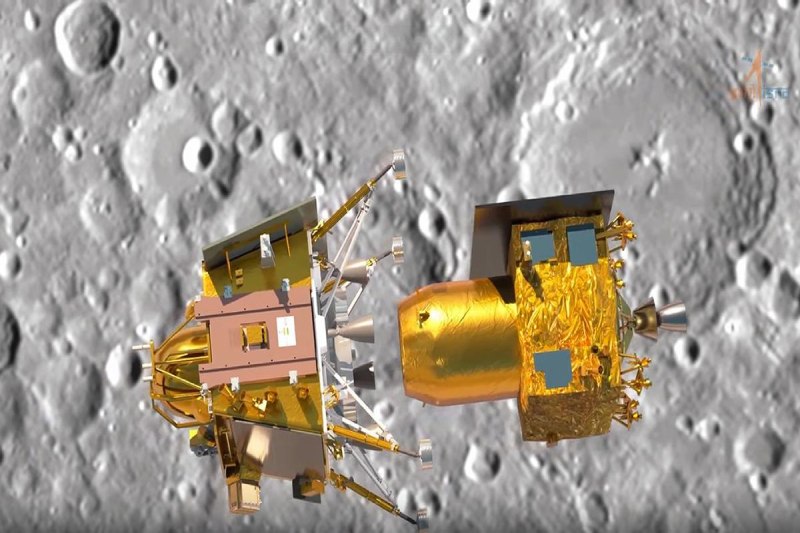An experimental spacecraft designed to enable an Indian lunar sample return mission has successfully returned to Earth orbit after carrying the Chandrayaan-3 lander to the moon.
On December 4, the Indian space agency ISRO declared that following a sequence of operations since October that brought the spacecraft back from a low lunar orbit, the propulsion module for the Chandrayaan-3 mission is currently in a high orbit around Earth. Previously, ISRO had not revealed that it was attempting to bring the propulsion module back into Earth orbit.
The 2,145-kg propulsion module’s primary function was to move the Chandrayaan-3 lander from its initial elliptical Earth orbit to a low lunar orbit. The module, which was a redesigned ISRO I-3K satellite bus, carried out a number of operations to increase the orbit’s apogee beginning the day after launch on July 14. These included a translunar injection burn and a lunar orbit insertion fire. The lander detached on August 17 when the module entered a roughly circular orbit approximately 150 kilometers above the moon.
On August 23, the lander made a successful landing on the moon. Spectro-polarimetry of Habitable Planet Earth, or SHAPE, is the name of the only instrument that the propulsion module used to view Earth while it was in orbit. After the lander separated, ISRO gave limited information about the propulsion module.
ISRO stated in a statement that it made the decision to try to return the propulsion module to Earth orbit after realizing that over 100 kg of propellant remained on board the spacecraft due to the accuracy of the launch and previous operations. On October 9, the first maneuver in that plan was carried out, increasing the apolune, or high point, from 150 to 5,112 kilometers in its orbit around the moon.
On October 13, the module executed a transearth injection maneuver, setting it on a course that saw it have four near-misses with the moon before departing its orbit on November 10. On November 22, at a height of 154,000 kilometers, the spacecraft made its first perigee as it entered a high orbit around the planet.
The maneuver, according to ISRO, enabled SHAPE to carry out observations nearer to Earth. However, it also stated that the purpose of the maneuvers was to “demonstrate the mission operation strategies for a sample return mission and derive additional information for future lunar missions.”
A mission to return samples from the moon has not yet been formally announced by ISRO. The Lunar Polar Exploration Mission (LUPEX), a cooperative project with the Japanese space agency JAXA, is its next moon mission. A Japanese rover atop an Indian lander would investigate the moon’s south pole as part of that project, which was also known as Chandrayaan-4 at one point. The earliest launch date that is anticipated is 2026.
Officials from ISRO have talked about the possibility of a sample return mission in the near future, nevertheless. The Indian government has set us a very strict deadline for space exploration. In the course of a panel discussion, Shri M. Sankaran, the head of ISRO’s U R Rao Satellite Center, stated that a sample must return from the moon in roughly four years.
He seemed to be alluding to the October 17 ISRO leadership conference, which was presided over by Indian Prime Minister Narendra Modi. The prime minister’s office released a statement that included the following objectives: an Indian space station by 2035; a crewed Indian lunar landing by 2040; however, lunar sample return was not included.
He mentioned that ISRO had devised a concept for a sample return mission in a subsequent conference presentation, but he did not provide any specifics. He speculated that the sample return and the LUPEX mission with JAXA may occur about at the same time.
The propulsion module’s return to Earth orbit was not the first instance of technologies being demonstrated for Chandrayaan-3’s moon sample return. The lander restarted its engines during the last few days of its mission in September, soaring 40 cm above the lunar surface and landing 30 to 40 centimeters from its initial landing spot. “This ‘kick-start’ encourages human missions and sample return in the future!” ISRO made a social media post.





